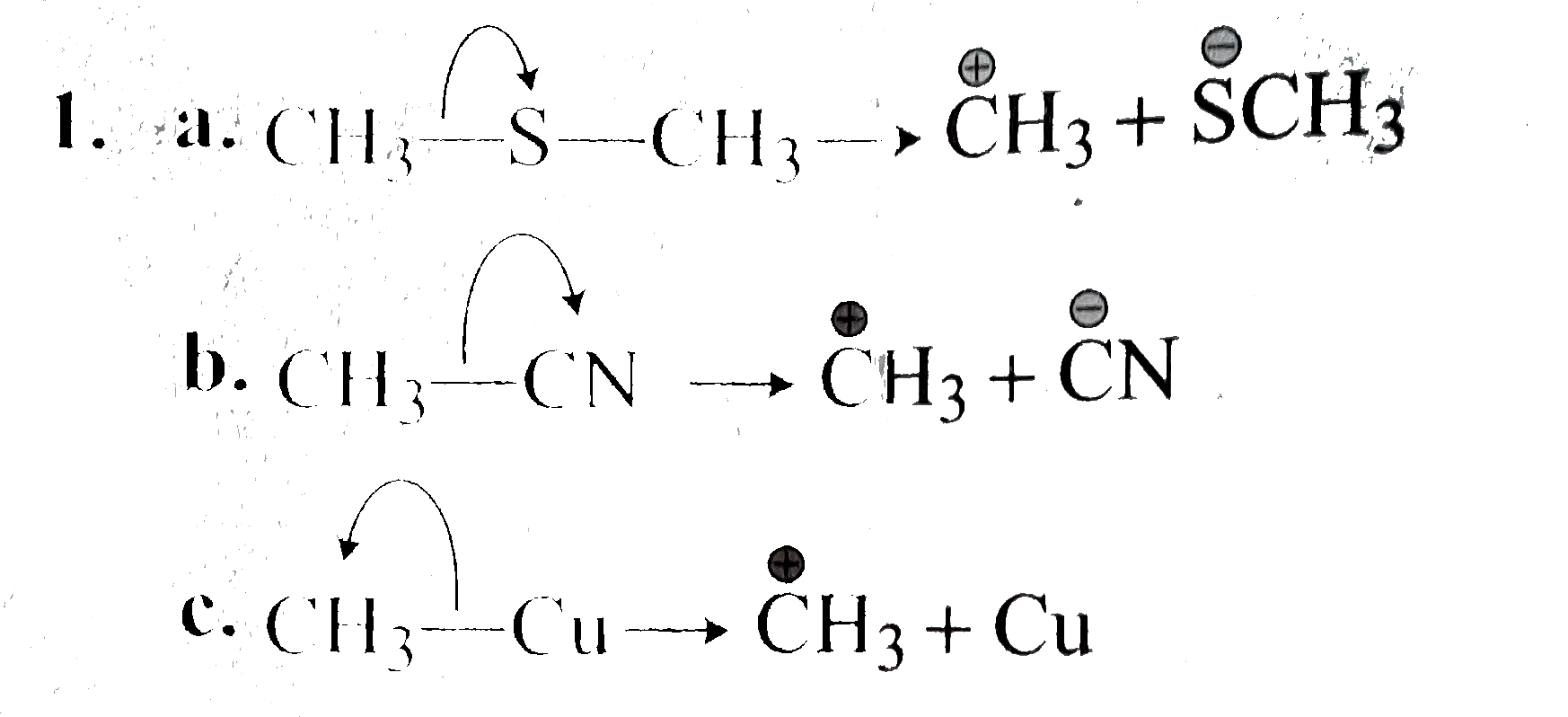Using the curved-arrow notation, show the formation of reactive intermediates when the following convalent bonds undergo heterolytic cleavage :
(a) CH3−S−CH3
(b) CH3−CN
( c) CH3−Cu .
 .
.
(Cu is more electropositive than C)
Topper's Solved these Questions
- BOOK - CENGAGE CHEMISTRYCHAPTER - GENERAL ORGANIC CHEMISTRYEXERCISE - Comprehension20videos
GENERAL ORGANIC CHEMISTRY
- BOOK - CENGAGE CHEMISTRYCHAPTER - GENERAL ORGANIC CHEMISTRYEXERCISE - Multiple Correct22videos
GENERAL ORGANIC CHEMISTRY
- BOOK - CENGAGE CHEMISTRYCHAPTER - GENERAL ORGANIC CHEMISTRYEXERCISE - Subjective11videos
GENERAL ORGANIC CHEMISTRY
- BOOK - CENGAGE CHEMISTRYCHAPTER - CLASSIFICATION AND NOMENCLATURE OF ORGANIC COMPOUNDSEXERCISE - Analytical and Descriptive Type3videos
CLASSIFICATION AND NOMENCLATURE OF ORGANIC COMPOUNDS
- BOOK - CENGAGE CHEMISTRYCHAPTER - HYDROGEN, WATER AND HYDROGEN PEROXIDEEXERCISE - Subjective Archive (Subjective)3videos
HYDROGEN, WATER AND HYDROGEN PEROXIDE
Similar Questions
Using the curved-arrow notation, show the formation of reactive intermediates when the following convalent bonds undergo heterolytic cleavage :
(a) CH3−S−CH3
(b) CH3−CN
( c) CH3−Cu .View SolutionUsing curved arrows rotation,show the formation of reactive intermediates when the following covalent bonds undergo heterolytic fission.
(a) CH3−CN
(b) CH3−CuView Solution
Knowledge Check
- Question 1 - Select One
In CH3CH2OH, the bond that undergoes heterolytic cleavage most readily is
AC−CBC−OCO−HDC−H - Question 2 - Select One
In CH3CH2OH the bond that undergoes heterolytic cleavage most readily is:
AC−CBC−OCC−HDO−H - Question 3 - Select One
In CH3CH2OH, the bond that undergoes heterolytic cleavage most readily is
AC-CBC-OCC-HDO-H
Using curved arrow notation show the formation of reaction intermediates when the following covalent bonds undergo heterolysis.
(i) H3C−CH2−Cl (ii) H3C−C≡N (iii) CH3ONaView SolutionUsing curved-arrow notation, show the formation of reactive intermediates when convalent bonds in the following substance undergo heterolytic (polar) cleavage.
(i) CH3−SCH3 , (ii) CH3−CN
(iv) CH3−Cu , (iv) Ag−I
(v) H3N+−BF3 , (vi) Cu(−OH2)2+4
Stratergy: Both bonding electrons remain with the more electronegative atom. If the bonding atom have same electronegetivities,, then the bonding electrons are taken away by the larger atom as it can sustain the negative charge more effectively.View SolutionIdentify electrophilic centre in the following :
(1) CH3CH=O
(2) CH3−CN
(3) CH3I.View SolutionIn CH3CH2OH, the bond that undergoes heterolytic cleavage most readily is
View SolutionIn CH3CH2OH, the bond that undergoes heterolytic cleavage most readily is:
View Solution

